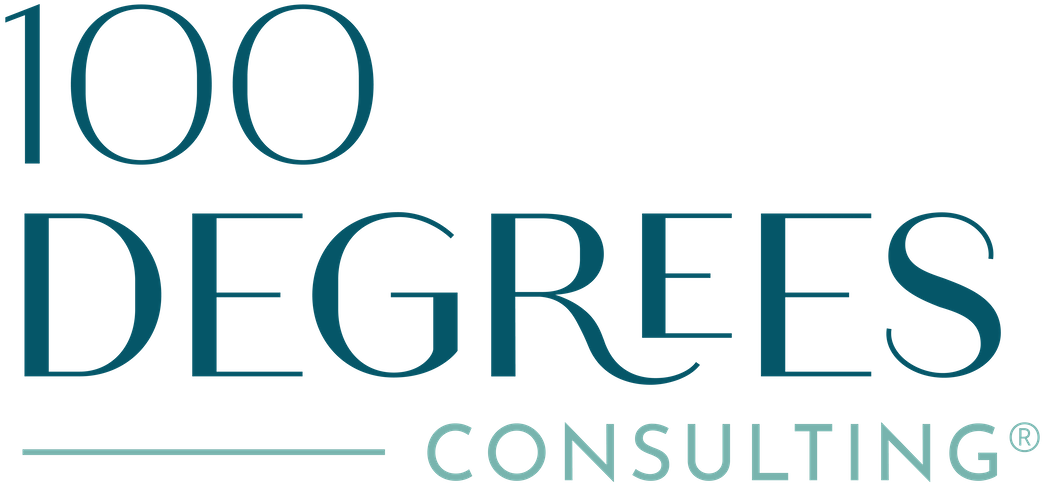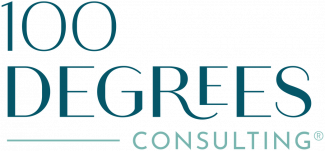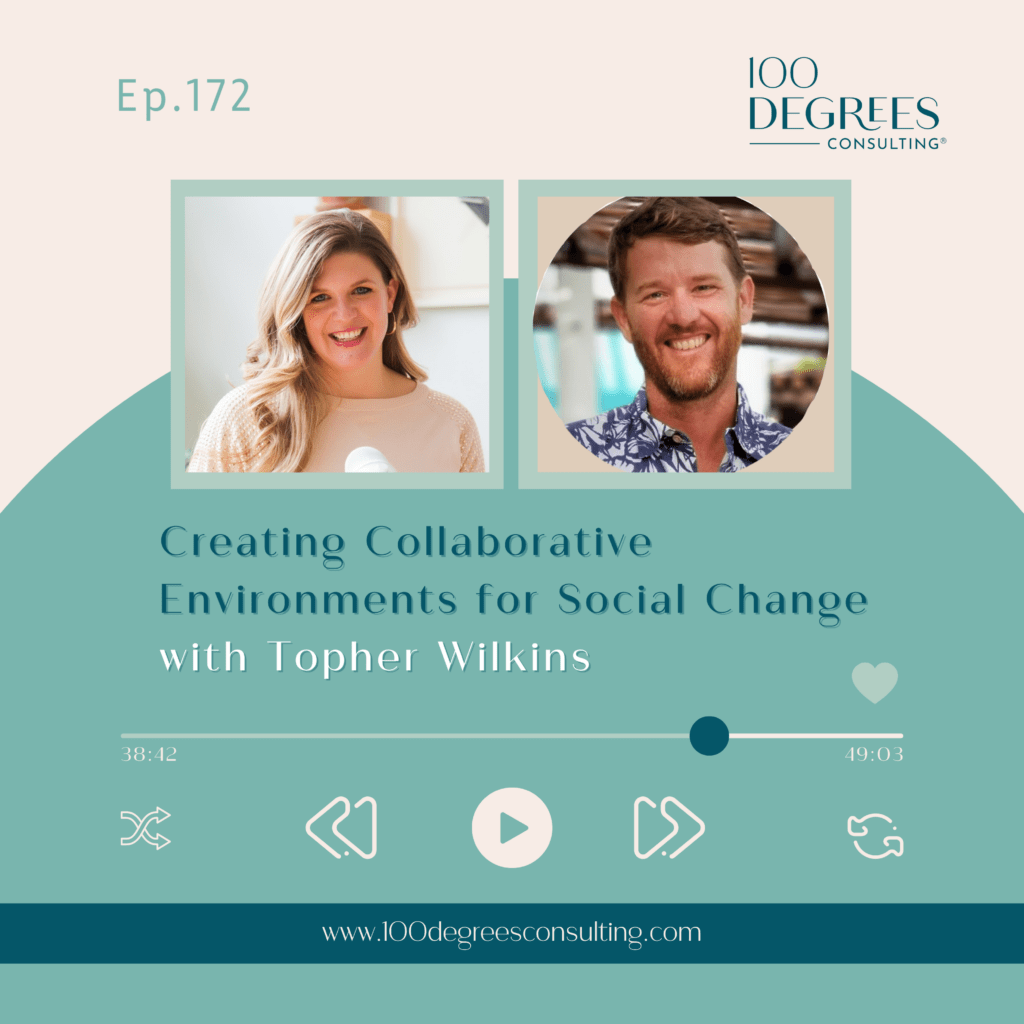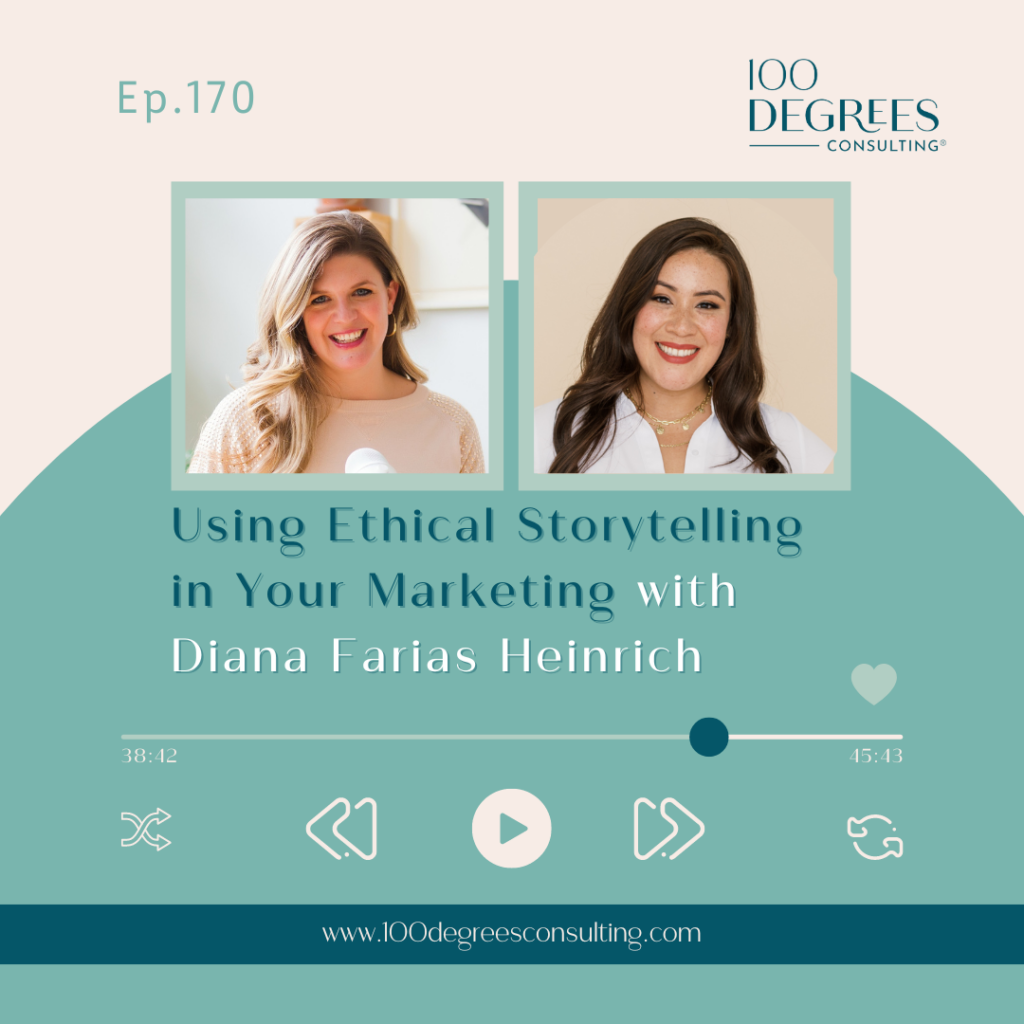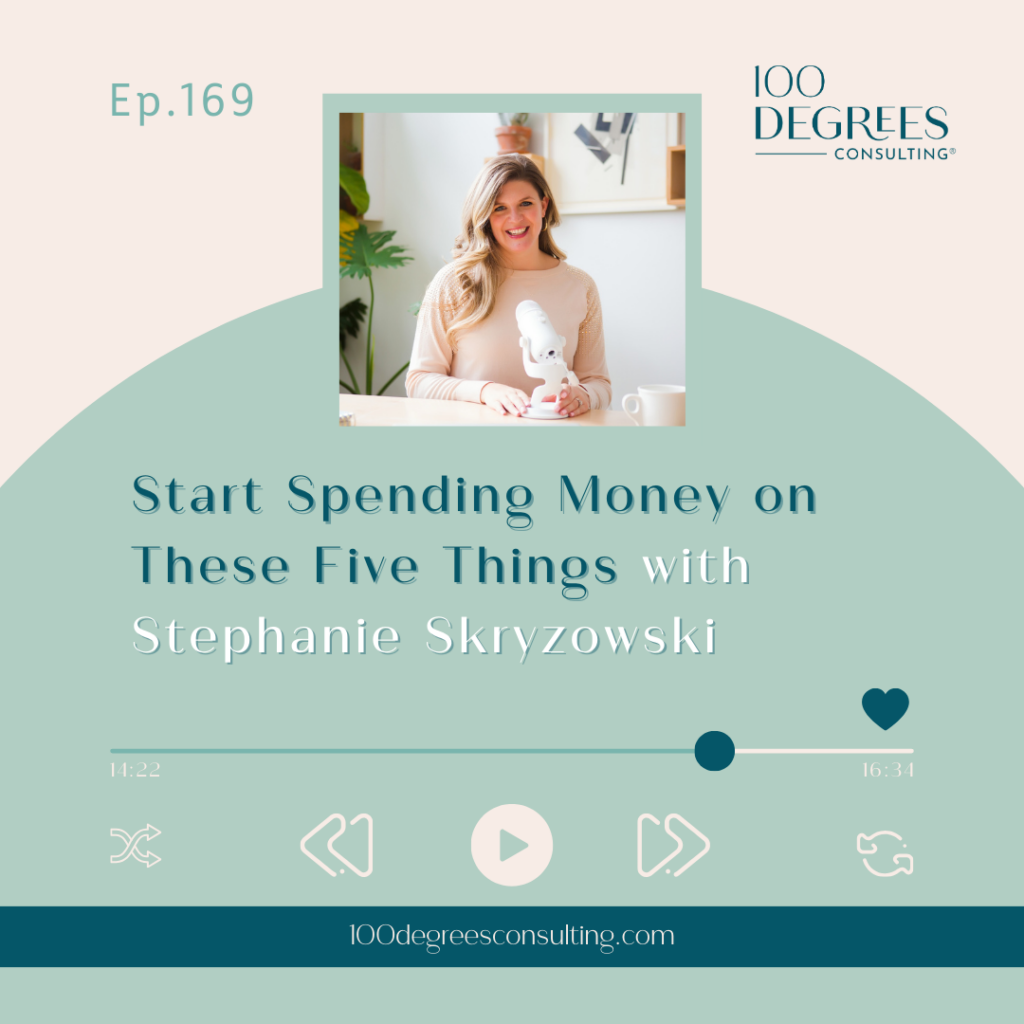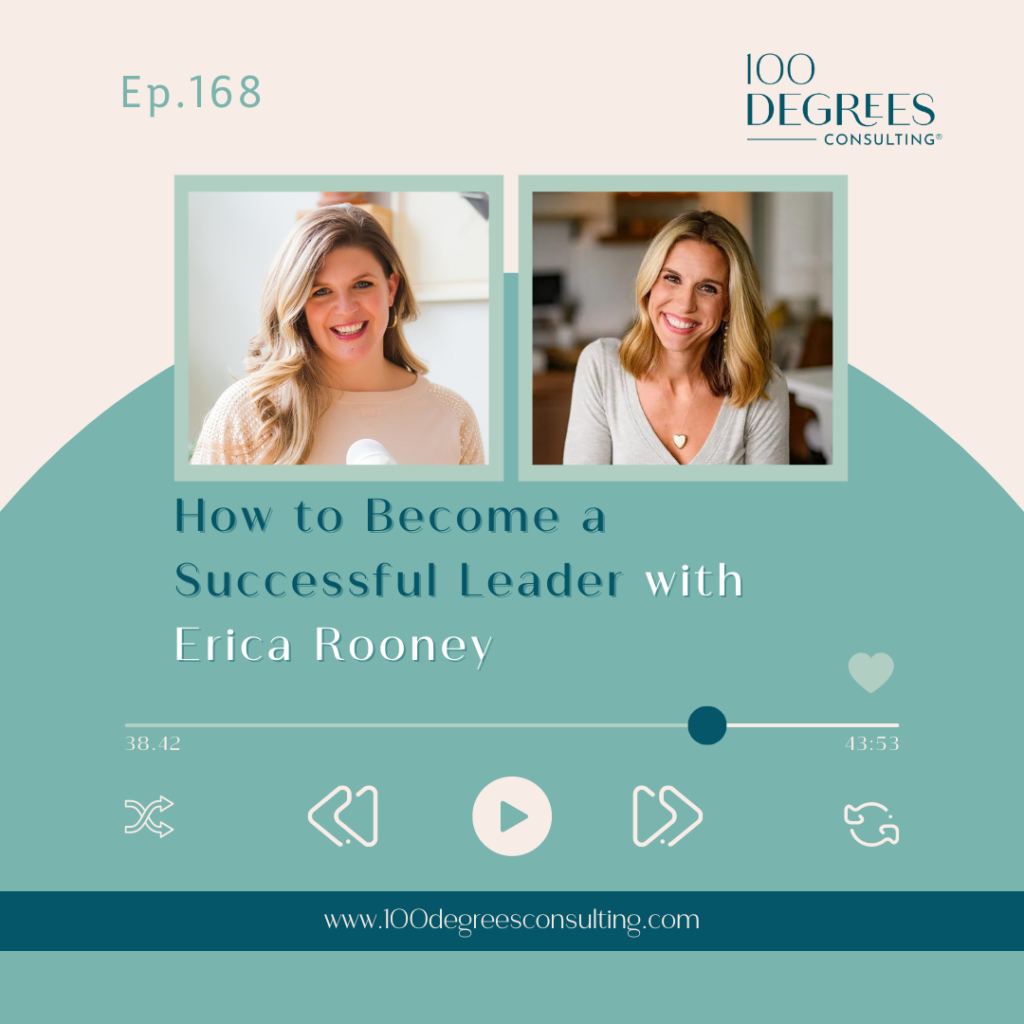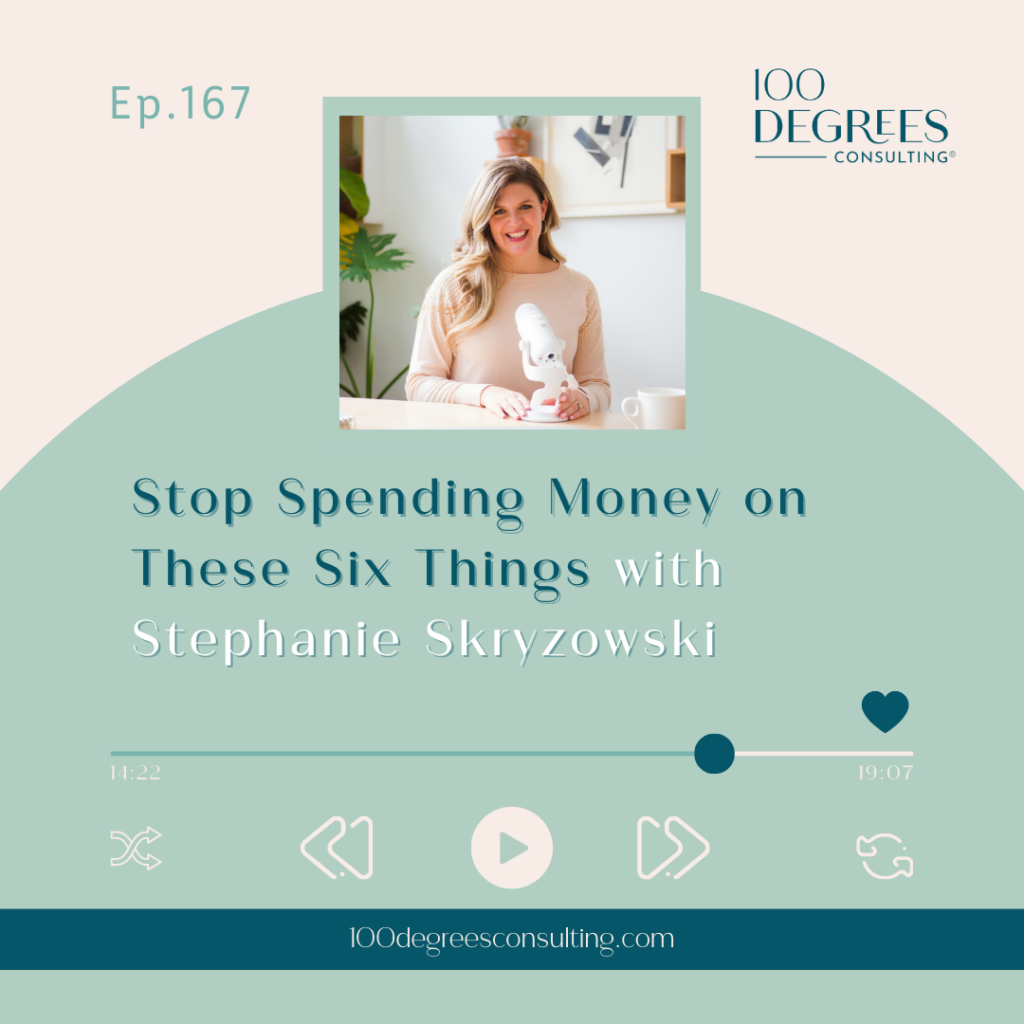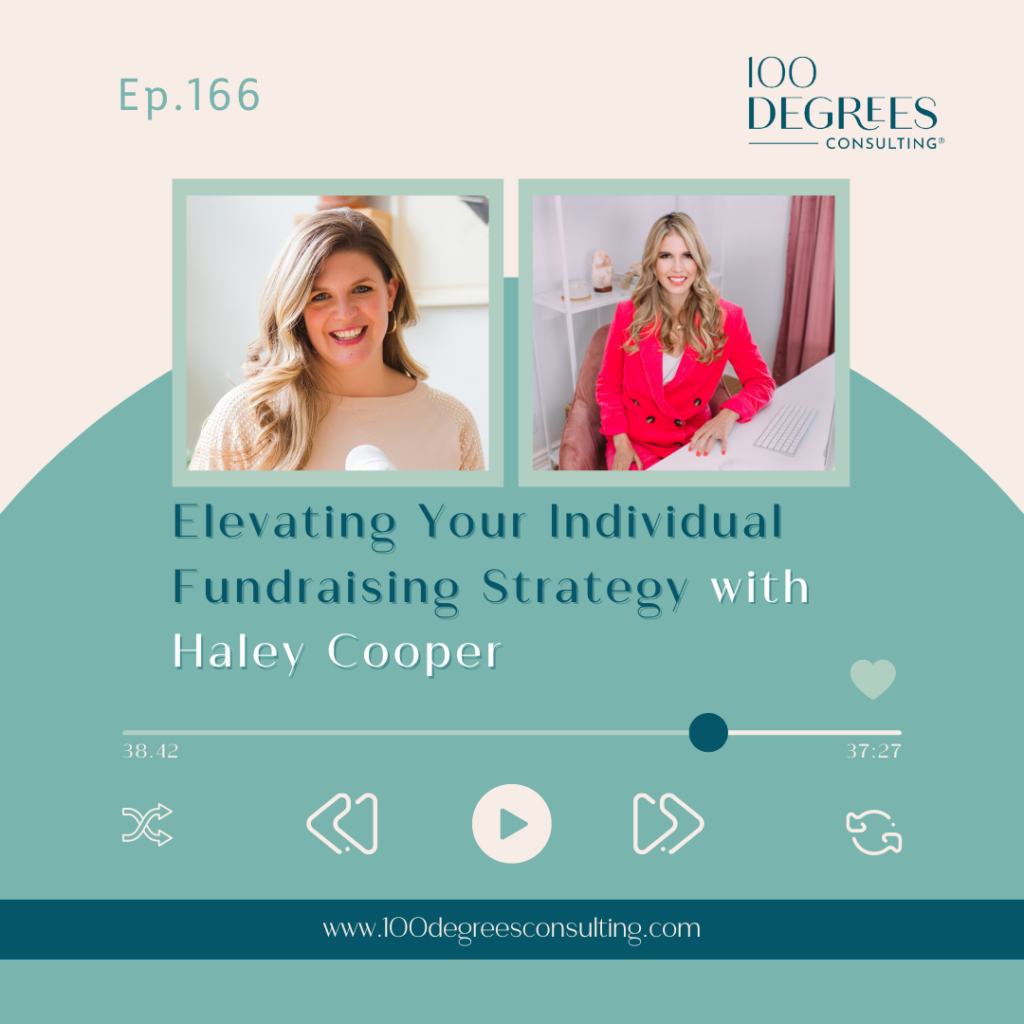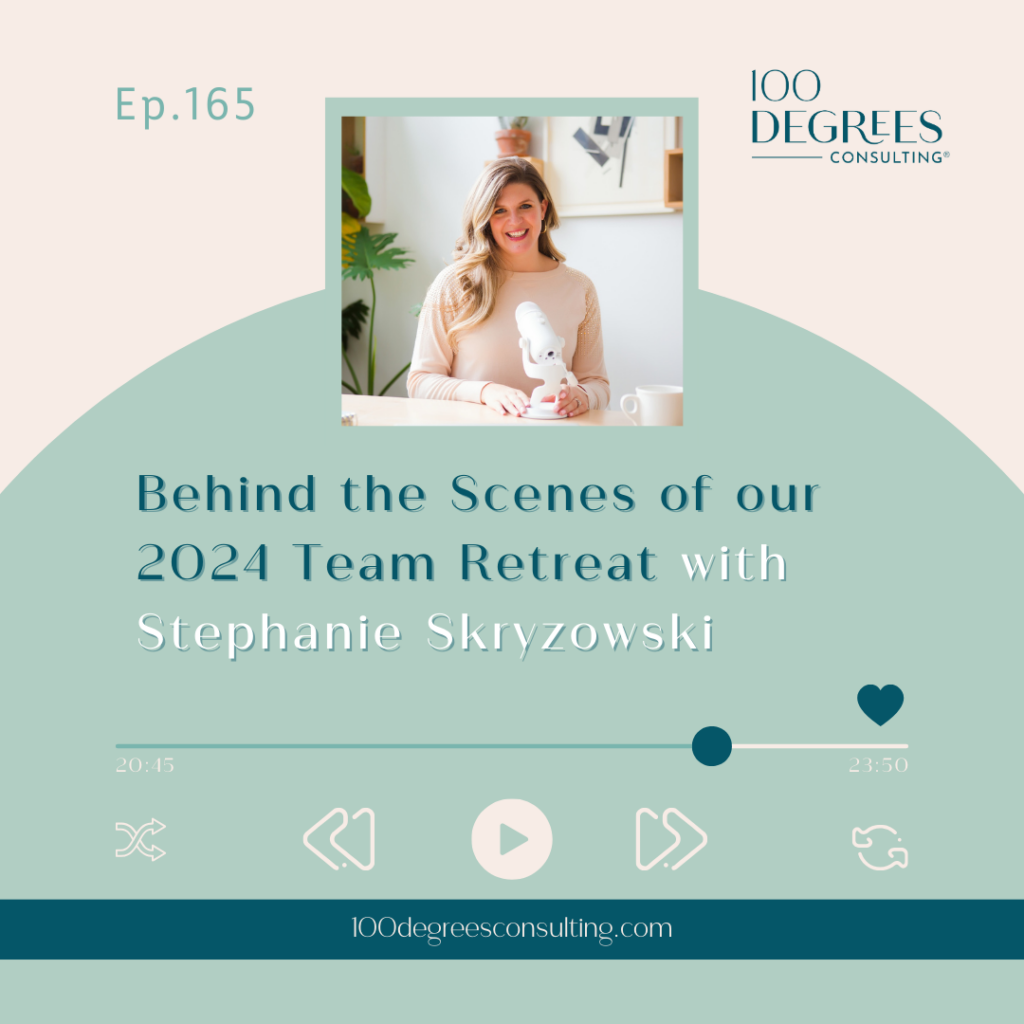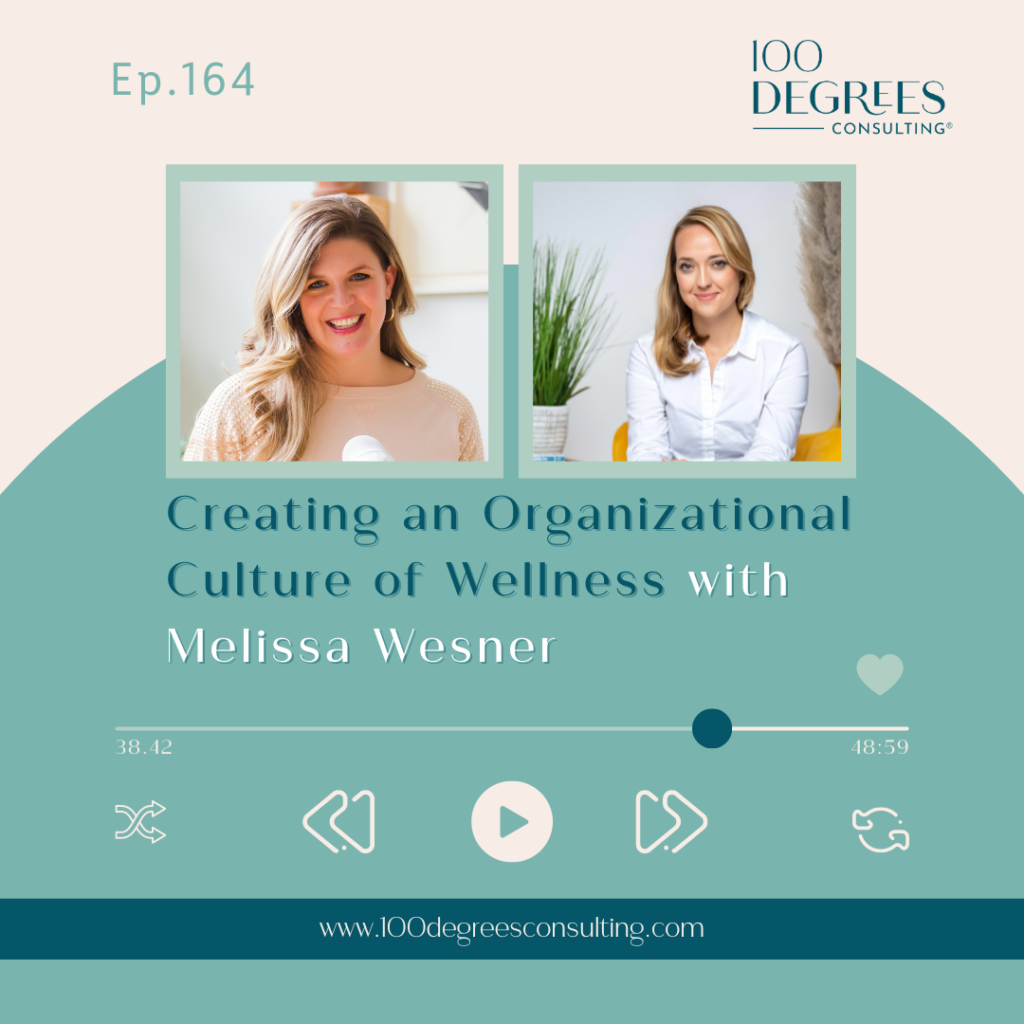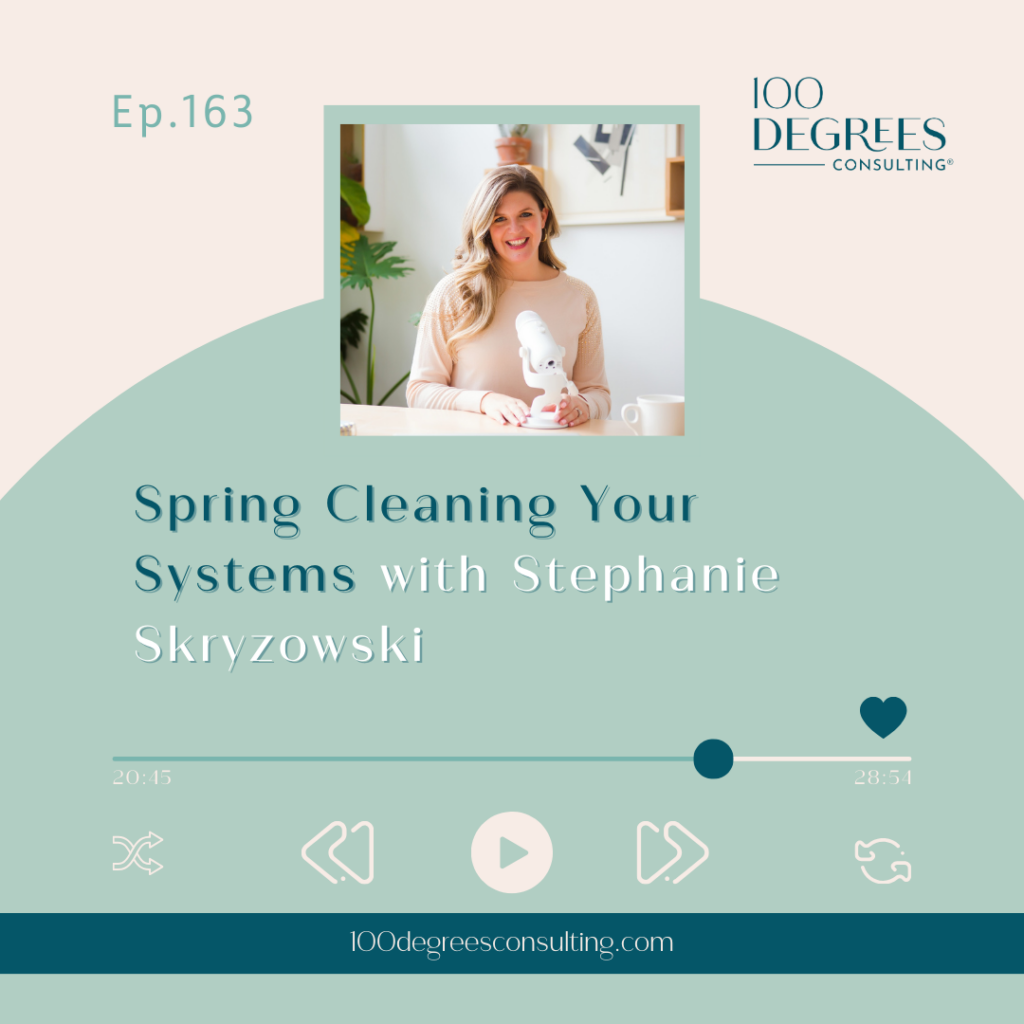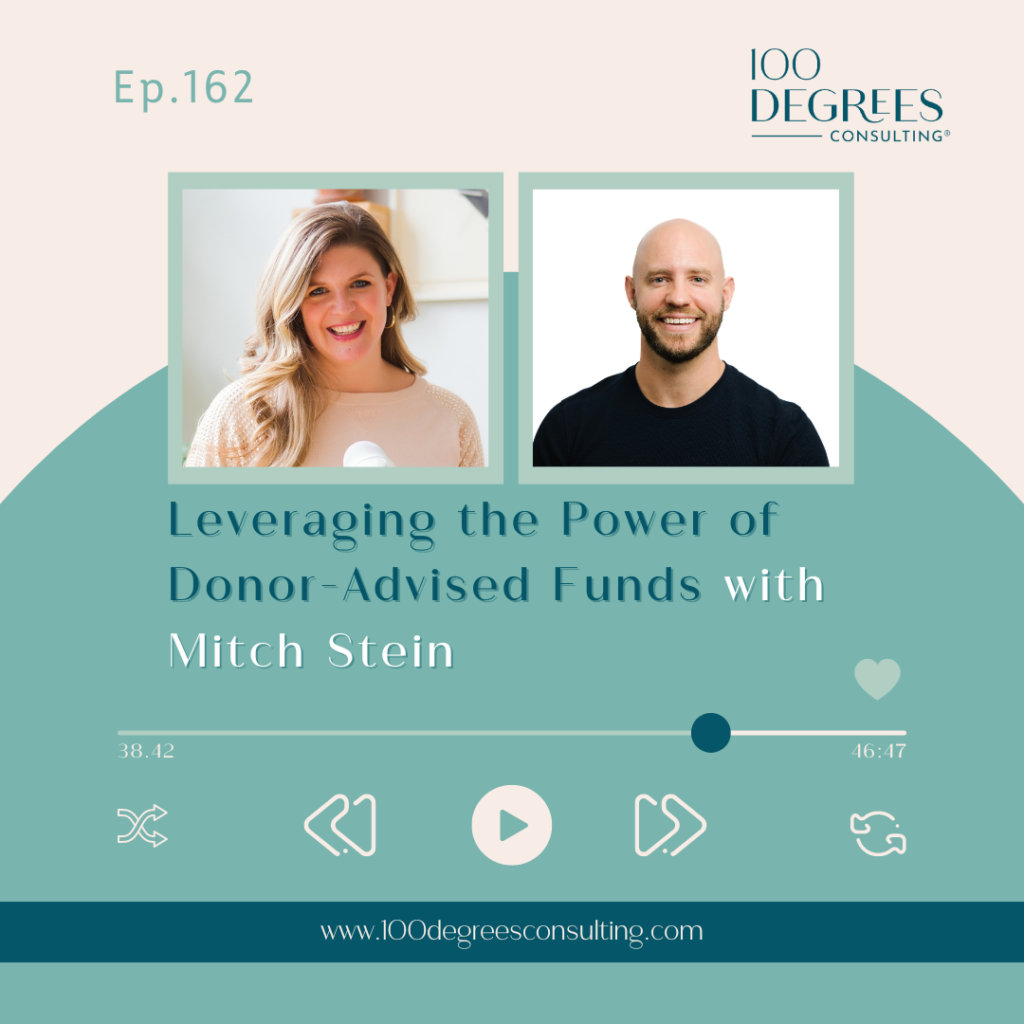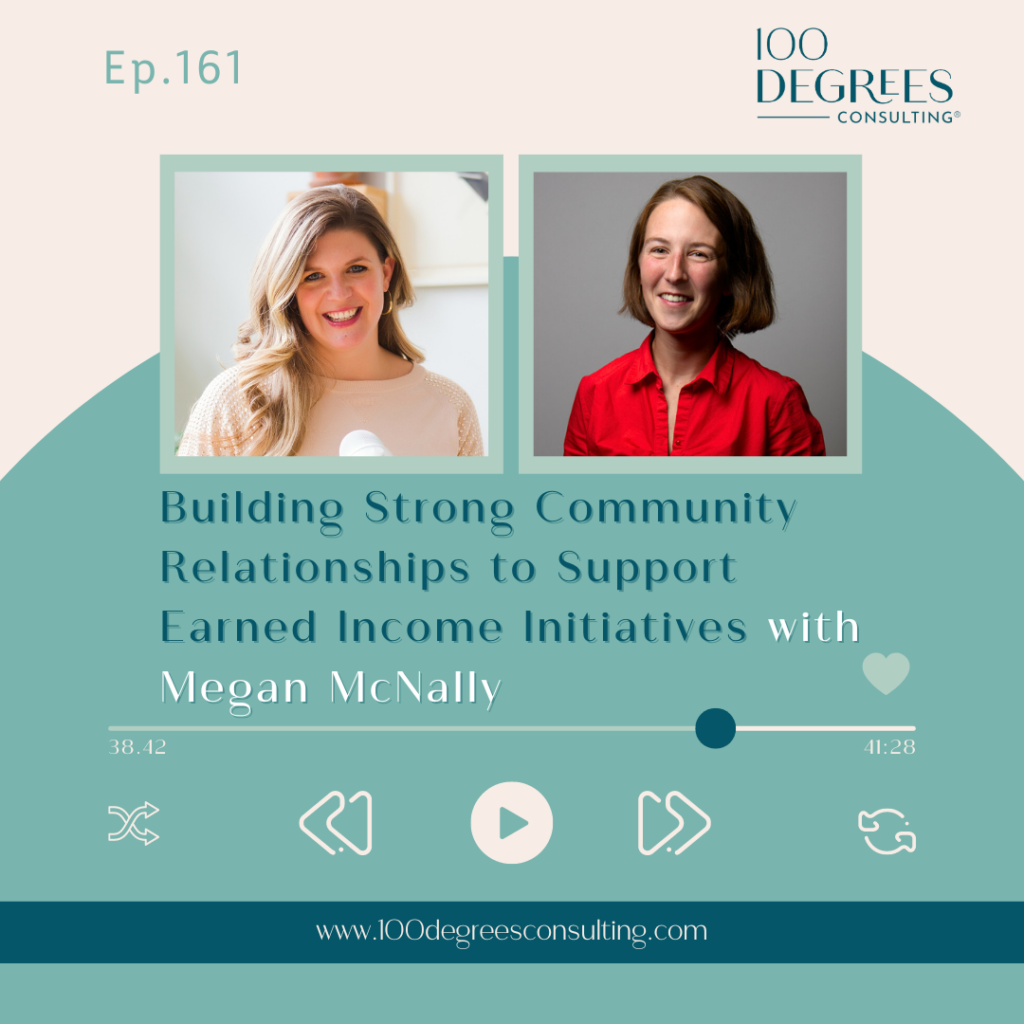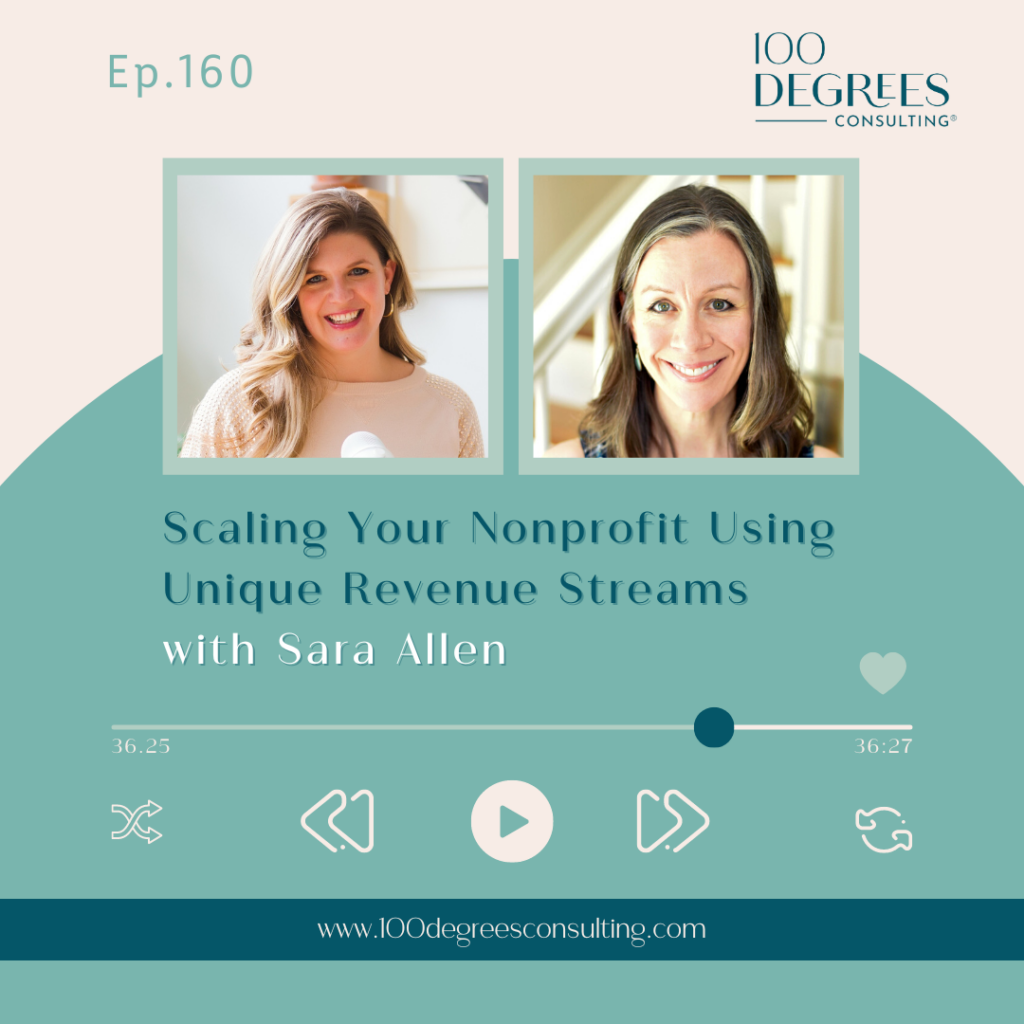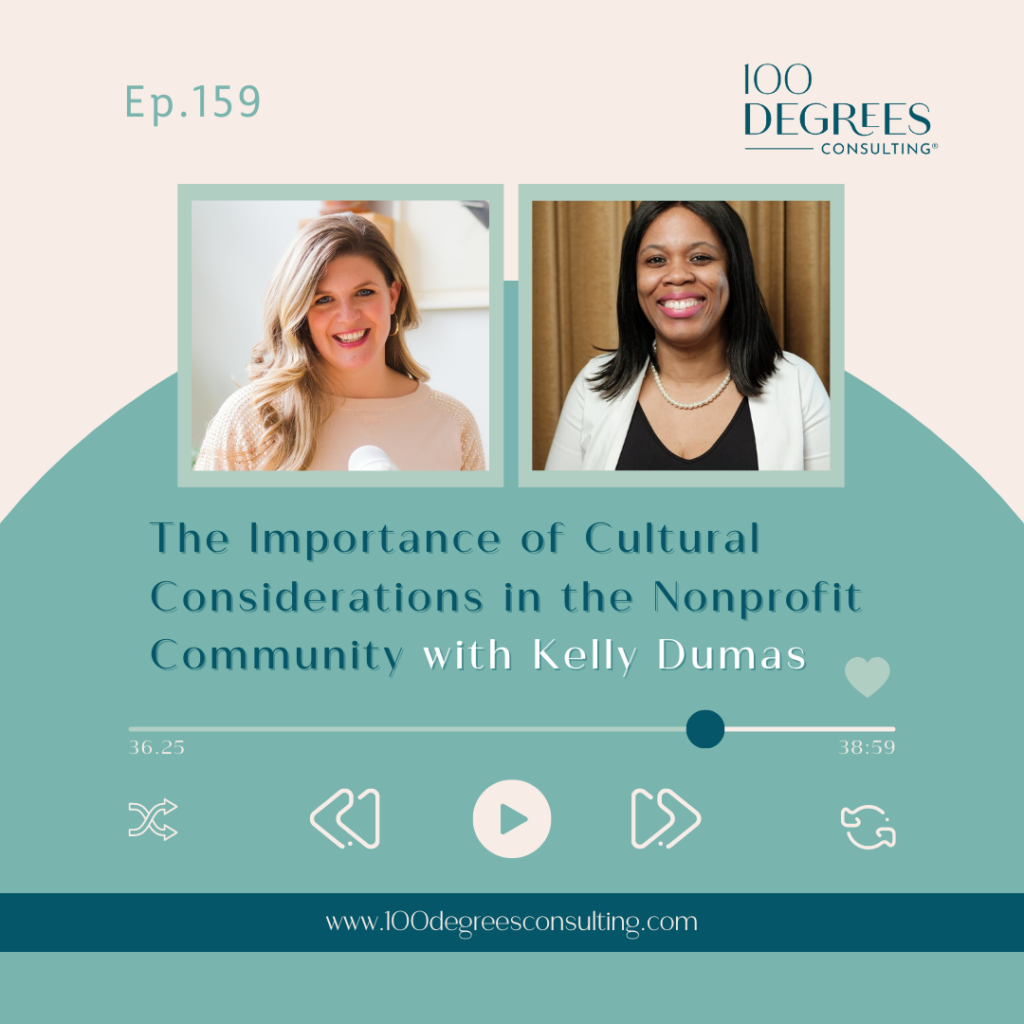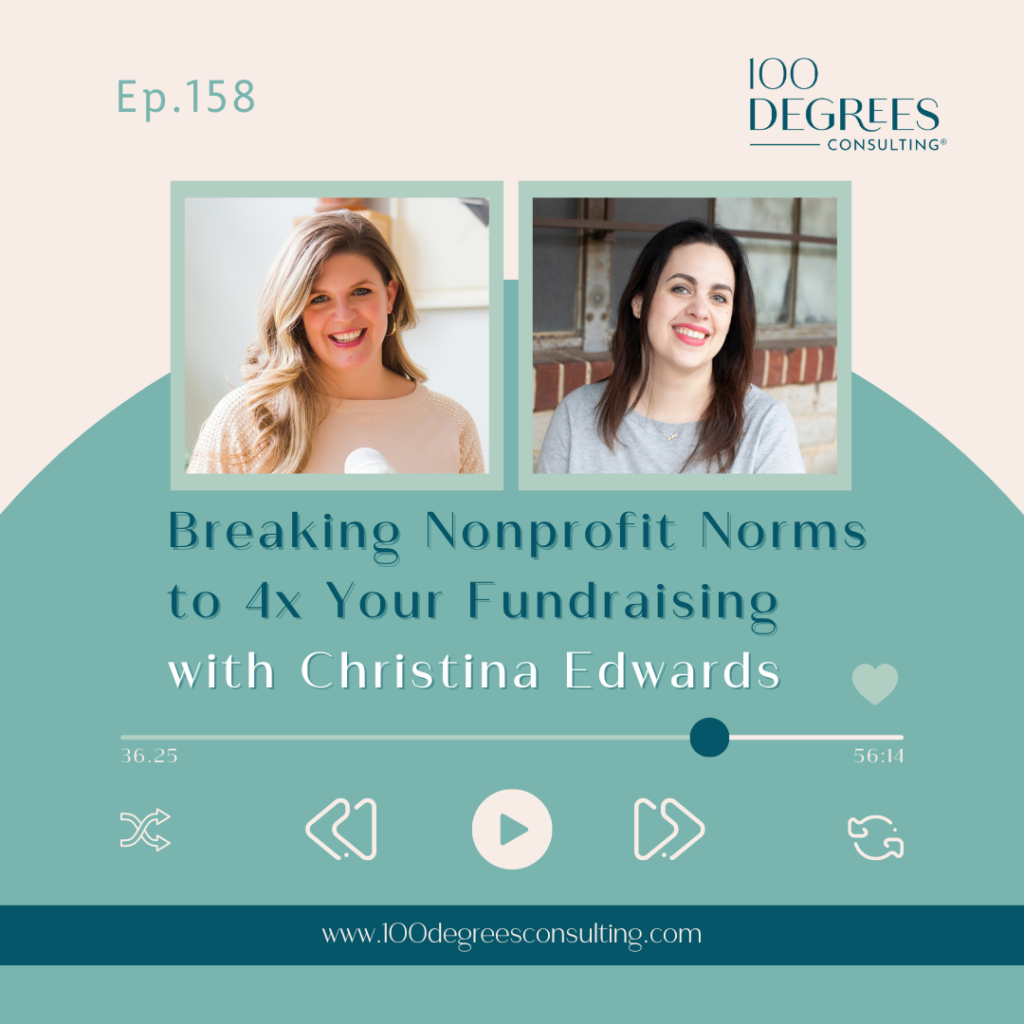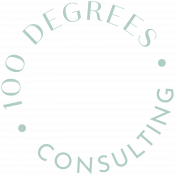Transcript Episode 126 – Institutional Fundraising and Empowering Your Nonprofit with Ash Rogers on The Prosperous Nonprofit
Stephanie Skryzowski: [00:00:00] Welcome to the prosperous nonprofit, the podcast for leaders who are building financially sustainable and impactful nonprofits and changing the world. I’m Stephanie s Kowski, a chief financial Officer and founder, and c e o of 100 Degrees Consulting. My personal mission is to empower leaders to better understand their numbers, to grow their impact and their income.
On this show, we talk to people who are leading the nonprofit sector in new, innovative, disruptive, and entrepreneurial ways, creating organizations that fuel their lives, their hearts, and their communities. Let’s dive in.
Hello. Welcome back to the Prosperous nonprofit. I am Stephanie. I have a really good episode for you today. We’re talking a lot about fundraising and not just like crowd, peer to peer fundraising, $50 here, a [00:01:00] hundred dollars. Here. I’m talking about like. Massive multi-year transformational institutional type fundraising.
So I’m talking to Ash Rogers, who is the CO c e O of Lo Walla Community Alliance, and Ash has been working with the organization for eight years. She’s overseen a 14 fold increase in annual revenue. Exponential reach of the model. Increased diversity in board membership and publication of many peer reviewed studies.
Now, she has also worked on the other side of the aisle because prior to Le Wallace, she was the director of operations at the SEG L Family Foundation. So like the ones that are actually giving them money away, overseeing a $12 million portfolio of 180 grantees. And in addition to her experience at Le Walla and at Segal, she’s a Global Health Core alum, and she’s worked with a number of organizations in Africa and around the world.
So she has just a really wide [00:02:00] array of experience and is especially an expert when it comes to institutional fundraising. So we’re talking about, first we chat about the co-leadership model, how there’s two co-CEOs at Lalala and really how that. Structured and the practicality on the day-to-day of what that looks like.
Because at the onset you wouldn’t think like, oh, having two CEOs, that makes sense. Well, she explains how it actually really does make sense and how it works really, really well at Lo Walla. And then we talk about building a fundraising strategy and attracting these large donors and really building a relationship and a connection with donors allowing you to.
Have conversations and sometimes even push back when requirements become too onerous. So it’s an awesome conversation. I think Ash is a wealth of knowledge and I think you are really going to love this one. So without further ado, let’s go talk to Ash.[00:03:00]
Hey everybody. Welcome back to the prosperous nonprofit. I am very excited to be here today with Ash Rogers, one of the co-CEOs of Le Walla Community Alliance. Ash, welcome.
Ash Rogers: Hi, I’m happy to be here. Thanks, Stephanie. Yeah,
Stephanie Skryzowski: so before we dive into all the things, I would love if you would just share a little bit about your background, your journey, and how you came to your role right now as the CO c e O of Lo Walla.
Sure.
Ash Rogers: So I started in this space right after undergrad. I, um, I, I connected with a nonprofit that was doing ball and tourism to various countries around the world, and my job was to coordinate. Those trips for college students, young professionals, and then with the revenue from those fees, then we would give small grants to local [00:04:00] organizations.
And so I got to do both sides of that. And I really loved working with local organizations and I really hated coordinating volunteer trips. And so that was my first kind of entry that work was in, was in Uganda. I really loved Uganda and was interested to kind of figure out how I could be useful and how I could, uh, go back in a different role.
And so I went to grad school. I got a master’s in public administration. I did some, uh, internships. At that time, I thought I wanted to work for the federal government as a foreign service officer. I went and interned in Malawi with the US mission there and realized I did not want to do that. And so after graduate school, I did a program called Global Health Corps, and again, was able to do that fellowship in Uganda.
I was placed with [00:05:00] a local organization called Coma Learning Centers. They also have a branch now called NAMA Wellness Center, and I still support that organization. And as my time there, I got to know a family foundation called Feal Family Foundation, and I worked as their director of operations really early on when they were, when they were kind of figuring out their philanthropy and figuring out where they could have the greatest impact.
And I had the real pleasure of, of being able to be part of that team. As we decided that, you know, they really wanted their money to go to local leaders. And then my job became to hire a fantastic team of East Africans who would do that grant making and would find great organizations. And I did that work for about four and a half years.
And La Walla was in my grant portfolio. And so I, uh, so that’s how I came to know La [00:06:00] Walla. I actually, um, was pregnant at the time when they were trying to fill the, the, the position. And I took the job offer on the same day that I gave birth to my first child. And so I’ve now been with La Walla for eight years, um, on September 30th.
So that’s, that’s about a month and
Stephanie Skryzowski: a half away. You will always remember the date that you
Ash Rogers: accepted the job offer. It makes it very easy to remember. Yes.
Stephanie Skryzowski: Oh my gosh. That’s awesome. So yeah, your experience has been very diverse, but at the same time sort of very aligned. And when you took the role at La Walla, was it for that co c e o role or what was the first position where you started here?
Ash Rogers: So my title at the time was Executive director and the organization, my predecessor, as he was leaving the organization, had had a more typical kind of [00:07:00] nonprofit working in Africa structure where they had an executive director in the US and a country director in Kenya. And it was pretty like a, a hierarchy in that way.
And the board wanted to recenter the organization. In our founding. We were founded by two Kenyan brothers, um, and their community. And they wanted an organization that had more decision making, more power and governance centered in Kenya. And so they split the executive. Into a executive director role and a managing director role.
And my now co c e o, Julius Vea was hired first as the managing director. He was on my hiring committee, and I very much joined Lo Walla because I was excited to work with him and his leadership. And then our task together was to try to figure out. What really that meant to center Kenyan leadership to create a governance and a leadership [00:08:00] structure that really matched our values.
And so over the course of several years, we worked on that with the board, changed the both the board structure and our executive leadership structure. And then we asked the board to change our titles in 2020 to
Stephanie Skryzowski: co-CEOs. That’s so interesting. And I work with a lot of organizations who have that sort of old school structure, 5 0 1 C three in the US and the c e o or executive director here, and then country director in wherever they’re working.
And I’m seeing this shift quite a bit to this sort of decolonized model like you’re talking about. Um, but then there’s other organizations who are not there yet because they haven’t figured out sort of like, How does this actually work? Like what are the sort of practical implications of this? So what does yours and Julius’s sort of day-to-day look like?
Do you have, do you share all responsibilities and everything is a, you know, co-decision, or do [00:09:00] you have your own sort of sets of responsibilities?
Ash Rogers: Definitely not. Everything’s a co-decision. That sounds real tough. I feel like the best analogy is like a marriage where you have, at least in my marriage, I don’t know, people’s marriage doesn’t work, but you know, you have some separate responsibilities.
And Julius and I have our own portfolios of things that, like, this is in my, in my portfolio for example, is board development, bringing in new board members and kind of supporting the board, uh, meeting process. Fundraising and communications, and then research and learning, and then the US side of the HR picture and, and US finances.
And then Julius, um, oversees everything else, which includes programs and operations and government partnerships. And then we do strategy [00:10:00] together. So when we’re working on our big strategic plans, those are decisions that we’re grappling with together and, and having lots of conversations on and global finance, um, which you are part of as well.
Um, kind of helps us pull all of that together. And there’s pieces of that that Julius is responsible for, and then pieces that I’m responsible for. And essentially, if something is in my domain, I’m the end decision maker. I often, if it’s a consequential decision, I will get counsel and input from Julius and I’ll kind bring him what I’m grappling with.
He’ll give me advice, he’ll, he’ll, he’ll kind of help weigh the options with me. But ultimately, I’m the one who makes that decision for something in my portfolio. Or I’m the one who takes it to the board if it’s really a board decision. And then likewise with Julius, if something’s in his portfolio, um, he may ask me to weigh in.
I typically have an opinion about most things, and so I’ll provide it. But [00:11:00] ultimately, Julius is the one who decides how we’re gonna move forward on that particular area. And I. You know, we get asked about this a lot. That’s kind of the structural way that it works. Um, but there’s like a soft way that it works, which is that we get along and we are pretty good at communicating and pretty good at being able to see each other’s side.
And I think that that is often where these co-leaders, co-managers processes can just get really difficult, which is like, you can’t make up for interpersonal conflict. And so you have to have two people that are able to work well together, and then you can build structures that make that work better.
Stephanie Skryzowski: I love your analogy.
A year comparison to a marriage, because I’m just thinking like in my home with my husband, there are definitely things that like I’m just responsible for, period. And there’s things that he’s responsible for. [00:12:00] But you do have that partner to be able to like, Hey, I think I’m gonna do this. What do you think about it?
But at the end of the day, I’m making the decision and I can think of so many things like that again, just in my home where I’m like, yeah, I’m the end decision maker, but I do ask for his feedback sometimes. Um, and so I think that’s just such a good analogy and that makes it seem. So much simpler than like, oh, there’s two CEOs leading the organization.
That sounds very complicated, but there’s so many facets of running a global organization that actually splitting that into two roles. It seems like it makes a lot of sense. Like there’s no way one person can really do all of that. Like that’s a lot. That’s a big job.
Ash Rogers: Totally. You can’t be, I mean, just like no one has the the personality to pull off excellence and kind of the.
Rounded way that you’d ideally have a C E O. And often you have people then in organizations or even ERAS and organizations where you know, you can really tell that c e o skewed [00:13:00] external and they have like really great external profile and partnerships in that period. I hope that they really liked, there was some internal stuff that wasn’t coming together or vice versa.
And so I think that there’s a big advantage of of that. And also just having the wells of energy, you know. We’ve been at this for, for eight years, and it’s real easy to burn out and it’s lonely at the top. Um, and it’s really nice to have someone else to, to share that with and even to say like, Ugh, I am, I’m tapped out right now.
You know, like, can you, can you step up a little bit? Um, can I hand a couple things to you? Because I’m, I’m feeling like, like a bit overwhelmed and so there’s, yeah. I think there’s a lot of advantage to it.
Stephanie Skryzowski: Yeah, absolutely. So one of the things that you mentioned was sort of in your portfolio as CO c e o is fundraising.
And I always, when I’m thinking about examples of [00:14:00] organizations that are doing fundraising really well, Alala always comes to the top of my mind. And obviously since we work together, I know the, the intimate details of all of your financials, but, um, What is your, like, how do you come up with a, I’m not a fundraiser.
I’ve never been a fundraiser. I’ve always been the on the side of like, I’m just gonna track the money once it comes in. Um, but what does it look like for you, um, as co c e o, as an organization to like develop a fundraising strategy? What does that, what does that mean? How do you determine what type of money to go after and where that money is?
And like, give us like big picture.
Ash Rogers: Yeah. At a big picture level, and then there’s some tactical tricks to it. But at a big picture level, it’s first is aligning your model and making sure that you have a model of program delivery, a value addition that is real, that’s making a [00:15:00] difference in people’s lives, that you can measure and demonstrate the impact of.
And in Lalala’s case, it was really important to us to build a model that could, that ultimately had sustainability, that could be owned by the Ministry of Health, that could be owned by government, and that there’s a real pathway to changing the system that is created, the inequities that we’re working against.
And so that’s one. It’s just like, You can write any grant you want, you know, and you can, and you can kind of like, uh, really run yourself in circles, but you have to believe in what you’re selling and you have to spend time making sure that that product has real integrity. And then once you have that, you have to protect it.
That’s when we come to like deciding what kind of money you want to go after and what agreements you’re willing to put up with, um, for [00:16:00] that money. And so that’s kind of step one, like making sure you have something worth funding then. And then looking at who funds that big idea, like who is excited in case, like who is about changing health.
Who is excited about maternal and child health, who is already interested in community health workers or community governance or community organizing because it’s those funders who are most likely to keep you on mission and most likely to give you resources that inevitably become unrestricted, which is one of our big goals is to bring in unrestricted revenue.
And it’s a easier to convince someone who in. Existence of your organization and believes in your big picture model to give you unrestricted money than it is to convince an organization that, you know, they’re not really excited about health, [00:17:00] but they, you know, will fund this project or that project with you.
Or like, they wanna do this little wash thing over here, or this little, you know, they will only do mental health or, or whatever it is. And it’s really hard to build a revenue strategy off of. Small project-based money like that. And so we go looking for organ for foundations who are already interested in our core model and in our mission.
And one tactical way you find those folks is you look at the organizations, the peer organizations that you work closely with and collaborate with. And you can see their nine nineties and you can see the organizations that fund them. Um, and, and that, and you start to kind of build a list. You start going to conferences that are relevant for your sector.
You look at the funders who are sponsoring those conferences and start to build a network and then a reputation, and then often funder referrals. Once someone’s funding you, um, You know, asking them, who else do you think should be funding us? [00:18:00] Who are you talking to? Who? What other funders in this space are you excited about that you feel like that you know your ethos of philanthropy?
And can you make an introduction for us, or can you pass on our resources and make a
Stephanie Skryzowski: recommendation? I have never heard that before, but like, I don’t know why not. Like, why have I not heard of this idea of asking your funders for referrals? I mean, frankly, that’s how we get like all of our clients pretty much is through referrals.
So why wouldn’t nonprofits do the exact same thing? Because like, good people know good people. I’ve literally never heard anyone say that or do that before. That’s brilliant. I love it.
This series is sponsored by Blackbaud, the essential software provider for the organizations and people who change the world. Blackbaud has been working with finance professionals at nonprofit and social good organizations for almost 40 years with its Blackbaud Financial Edge, N X T Fund, accounting software [00:19:00] expertise and services.
You can streamline your financial operations, strengthen your accountability, and make data-driven decisions to increase your impact. To learn more, visit blackbaud.com.
I also think the point about being really strategic and looking for those organizations who are already interested and have a, maybe even a proven track record in funding organizations that are doing the work that you’re doing or that have a similar mission to you is so important because I know a lot of, especially a lot of.
Startup organizations are just gonna like write grants for everything that’s giving away $10,000 or $50,000 here and there. And then, like you said, you can’t really build a fundraising strategy on all of these little projects. You need really a more holistic approach that’s gonna fund more. And I think that’s why it’s so important to be strategic and not just applying for every single grant that you can possibly find.
And I think one of the strengths that I’ve seen in Lolla is, [00:20:00] Your ability to attract larger donors and donors who fund you for not just, you know, a small project this year, but multi-year, and then renewals, like they come back year after year, or, you know, grant period after grant period and continue to fund you.
And so how has, like, how, how has that come about? Has that been because of the strategy of, um, attracting donors who are really passionate about your work? Or how have you been able to do that for so long?
Ash Rogers: Yeah, I, you know, a couple things come to mind. The first is creating a real relationship with the donor and whenever possible, connecting on ideas rather than just connecting on kind of the details of your project.
I think I’m always, when I’m going into a conversation with a funder, I have my objectives of what I wanna ask them. Of what I want them to tell me [00:21:00] about their philosophy of philanthropy, of how they see healthcare should be delivered in Sub-Saharan Africa. And I wanna engage with them on those ideas so that we are in the work together, that they, that I’m kind of understanding where they’re coming from and that we’re speaking together about great.
Like how do we solve this problem together? And that helps me. Obviously better position and like, you know, send them a proposal eventually that that really matches them. But it also puts us in the same work together. Like now we’re on the same team and I think that that builds ownership, like they’re owning the work that’s happening.
And on that same point of like building a relationship, it also has to come with. A level of like intellectual integrity maybe is the term for it of like, I think funders also, like they are [00:22:00] people who often deeply care about this work and have their own technical knowledge and experience and they wanna engage in real conversations.
And that means that like we don’t always, as an organization agree with that. And we don’t always say like, yeah, you’re totally right on that. And I think it’s really important. To be able to engage with people, to tell them when you disagree, to have debates with them about real ideas. I think people can feel the authenticity of that.
And you’re likely to end up with a grant that you are more happy about implementing, um, because you’ve really, you know, you’ve kind of taken that courageous step to push back a little bit. And I think that that’s something I’ve learned from being on the other side and working with a family foundation and being that person who’s responsible for giving away money.
And feeling like, I remember my husband said when I, when I quit that job for Lo Walla, he was like, you know, just take it in now because you’ll [00:23:00] never be as beautiful or as funny as you are to people right now when you’re giving them money. Um, and it’s a real, it’s a real point. And so you start to crave an authentic conversation with someone.
And so I think that that’s a really important point. I think a lot of times as nonprofits, we feel like we have to. Kind of fit our models into the paradigms of donors. And I think instead we need to engage our model with their model. Like we need to put them up next to each other and like let them kind of grapple and speak to each other, but that we should be pushing back.
We should be sharing our real and really engaging in, in debates on ideas.
Stephanie Skryzowski: That’s so interesting. And I think that building that relationship can also potentially help shift that power dynamic where it’s like, I’m just the poor little nonprofit worker asking you for money and you know, I’ll do whatever you say and I’ll like jump through hoops and, you know, um, When you have that relationship, and I know I’ve seen, I’ve [00:24:00] definitely seen like some of the really onerous, you know, reporting requirements and the way that nonprofit organizations have to jump through hoops in order to meet some of these funders requirements.
Sometimes before the award, sometimes just leading up to them, even considering you for the award. And a lot, of course, a lot of times after you’ve gotten the award, the reporting requirements, so. Does this, you know, this sort of collaborative, the way that Lolla collaborates with its funders, um, does that help with that?
Does that help to be able to push back and be like, honestly, this, okay, maybe wouldn’t say it like this, but like, this request is ridiculous. How can we come to a different solution on getting you the information that you need while also not like spending 80 hours of our time? Does that help you be able to push
Ash Rogers: back?
I think it does in a lot of cases, Stephanie, you know us well enough to know that like we don’t hit this a hundred percent of the time and that we are also [00:25:00] in a dance with, with some of our funders, um, and have had very onerous due diligence processes. And I think sometimes we’ve gotten it wrong when we should have walked away from the table sooner than we did or, but, I do think that that principle, it’s the right principle.
It’s like you need to be able to engage in ideas. You need to have your own kind of boundaries and parameters about the money that you’ll take. And there’s have all sorts of parameters about the kind of grantees that they’ll fund, and there needs to be equity on both sides where you’re also having, as an organization your own understanding of the type of money that you are willing to take and the type of funder that you’re willing to engage with.
Stephanie Skryzowski: And do you think that not all money is good money? And have you at Lo Walla or in any of your, you know, any of your other experience taken money before that you’re like, we really shouldn’t have done that. This is for whatever reason.
Ash Rogers: Totally. I [00:26:00] think one of the best skills you could learn as a nonprofit leader or as a fundraiser is how to say no to bad money.
And has been on both sides. We’ve said no, sometimes we’ve said yes sometimes, but. When we’ve said no, when we’ve said no to bad money, I have never regretted it. Mm-hmm. I’ve always felt like that was the right decision, that actually enabled growth, that allowed us to stay closer to our mission, and so absolutely.
I think that’s an essential skill and one that also has ripple effects for the sector. If more of us did that more often, it would be harder for this, you know, kind of funder behavior to continue.
Stephanie Skryzowski: Yeah. And I think, um, I, I think that’s such a good point in the way that, that it could potentially impact the sector.
And I feel like overall there’s just this scarcity mindset where if we say no to this money, then that’s it. Like there’s no more that’s coming to [00:27:00] us. This is our last opportunity. So we have to say yes. And if we don’t say yes, then you know, the, our programs will not be able to make that impact. But there’s always more, and I think that like we just.
Think of this, there’s one pot of money and once the pod is gone, it’s gone, but it’s really not like money is an infinite resource and I feel like not enough. Leaders like see it that way, I guess. And it’s something that I’ve had to learn in my own business, like saying no to clients that I just knew were not gonna be a good fit.
And at the beginning I said yes to everybody because I was terrified. Like, what if nobody else like walked through these proverbial doors? Like I’m gonna go out of business. But every single time I’ve said no. Something like 50 times better has come like right around the corner. So, I think that’s so important for nonprofits to remember.
It’s like number one, it’s not just one pot, like one finite pot of money. Like there’s more where that came from and sometimes it is better to to say no. I think that’s just like a growth point for [00:28:00] all leaders though.
Ash Rogers: Absolutely. Yes.
Stephanie Skryzowski: So what do you think about I, I’ve seen the tr, I think we’ve all seen this sort of trend lately with this idea of transformational giving, like a one time, very large, um, oftentimes unrestricted gift coming to organizations.
Um, we’ve seen it with a lot of like, A handful of very wealthy people in the US giving away just like massive chunks of money to organizations, which on one hand is fantastic because like, yes, we will take $5 million or whatever it is. That is huge. That’s, that is game changing for a lot of nonprofits.
On the flip side of things, um, there’s also the conversation that like, okay, well now this one donor gave us all this money, so other donors think we don’t need money anymore. So what’s the response to that? I mean, we don’t wanna stop the big, you know, the big transformational, unrestricted giving. And at the same time, we still need to show other funders like, yeah, we do still need your money.
So how do you have that conversation? [00:29:00] What does that look like? Yeah.
Ash Rogers: To start, I think we have to realize what’s happening in philanthropy and the example that some of those. Philanthropists are having, which is that they’re creating an alternative model. The name brand, big box philanthropists that you know of, they have built big bureaucracies.
They’ve hired experts, and they have built huge teams in order to deploy their capital. And the cost of deploying that capital is quite high. And I. Due diligence processes, the oversight, the reporting, the compliance that’s been built around those is also quite expensive to the sector, not just to that foundation, but to the entities that are engaged.
And so you have a whole host, thousands, [00:30:00] maybe tens of thousands of nonprofit organizations. Who are doing fantastic work, who get audited every year, who submit their nine 90 who, or to whatever their, their tax oversight entity is. They have been due diligence by somebody. And so you can piggyback what these philanthropists are doing or piggybacking on that, that work that’s already happened.
And saying, great. We’ll do a little bit of our own digging. We won’t take any of your time. We won’t make you submit a whole bunch of stuff to us. It’s all publicly available on your website. Anyway, we’ll find your nine 90 ourselves. Maybe we’ll ask you for your audits and then we’ll give you a big gift and the, and the transaction costs of that capital being deployed.
So much lower and it’s a practice, I think in a real lack of ego. And in an urgency to deploy resources. So I think [00:31:00] first of all, you know, there’s lots of, there’s lots of critiques that come to those philanthropists too, that they’re doing this wrong or they’re doing that wrong, or it should be better in this or that way.
And that’s all, that’s all good to be sharing. It’s good for us to hold philanthropy responsible and it’s pretty cool and it’s, uh, certainly exciting when.
Just as you’re talking about, it also presents this challenge where you have your longtime funders, the ones that you need year after year, the ones that you need to be with you, um, for the long haul saying, oh, is there a place for us anymore? Right? Like, looking up the size of that grant and seeing like, oh, well we only gave them hundred millions.
Do.
One thing that that LOA has done is shifted a little bit from talking about, and this is where finance comes down to it, [00:32:00] Stephanie, and we’re, and we’re, and we’re a hundred degrees, has been really useful to us and helping us think not just year to year, like what’s our annual expenses and our annual revenue, and then having funders kind of zero in on that.
Like, oh, what’s your budget gap for the next six months? And instead putting together a bigger picture vision. No, no, no. We have a five year vision. It’s gonna cost $50 million or a hundred million dollars. So yes, we had a philanthropist come in this year. They gave us several million dollars. Um, they gave us $10 million is $20 million.
But you know what? Against the size of the problem, against the size of the problem and the size of our strategy to defeat that problem, this is super helpful. We’re so excited we have it. And. We need you long-term too. And if your money stays in, we’re closer to that $50 million goal or that a hundred million dollars goal.
Um, if your money goes out, we’ve just exchanged, uh, a [00:33:00] one-time, uh, gift with a enduring long-term partnership and, and we’re not further ahead as an organization. In fact, like we’re probably further behind. So that’s how, how we’ve tried to approach it is to try to really, like, let’s think about the bigger vision here and where all this money fits in to the scale of the problem.
Stephanie Skryzowski: I think that’s key. Being able to articulate a longer term vision and the size of the problem. I love that you said that because if we’re just sort of in our day to day and you know, that’s the way that we’re talking about the organization and our needs. Well yeah. Our budget is covered for this year, so maybe there isn’t a need for you, but like stepping back and thinking really big, that’s where we need to put on that visionary hat and really be able to.
Share. Share what that longer term vision is. And is that, you know, when you think about like putting together a [00:34:00] long-term vision, is that like a strategic planning process or does it not need to be that complicated where you’re hiring this expensive consultant and putting together a strategic plan? Or is it just like, hey, here’s the problem and here’s what we wanna do.
Ash Rogers: The wallet did. We’ve had strategic planning processes. We’ve never hired an expensive consultant for strategic planning. We hired what I would say was like a coach, um, for our last strategic planning process who worked with us. I would say maybe like 20 to 30 hours over the course of a year. And so she provided some support to our internal team.
She had some board surveys and interviews and she helped us kind of keep a template together and, and keep our ideas on track. And then we did what we, there’s the online, you can find a one page strategic plan template. And that is what we use. We spend a lot of time working with our communities and having [00:35:00] community led processes in which community members were talking with each other to really grapple with identify challenges, identify kind of hopes and dreams and what they would wanna see the organization doing.
Um, and we spend a lot of time there and we spent time then working with our boards to come up with five big programmatic goals. And then five key capabilities, like organizational strengths that we needed to be able to execute. Um, and then we costed it. And, and, and I think at that level, like having some directional goals, each of our five goals I think had three to five KPIs.
There’s like slightly more detail to it, but not much. Um, that’s really the level of detail that’s going to be relevant. Three years from now, and certainly five years from now anyway. And I think, you know, these strategic processes that go way further [00:36:00] in depth than that, unfortunately, maybe you get a lot of ideas in your team’s learning together and that’s valuable.
But the actual content itself will be different in 12 months. Um, and you’ve put a lot of money and a lot of resources into details that inevitably, if you’re a learning organization, if you’re a growing organization, those details will
Stephanie Skryzowski: change. I think that’s so powerful because I feel like a lot of times people get hung up on the process and on the details and on the expense, and like, I think you’ve just shown, like it doesn’t have to be expensive and detailed and cumbersome to be able to put together this big vision that then you can share that can help advance your fundraising and your revenue generation, um, conversations and activities.
And I, I think that’s, Fantastic. Because again, I just think people get very hung up on the process and it really doesn’t have to be this complex thing. All right. Well, oh my gosh. I feel like I could talk forever. I’m just really interested in your perspective on fundraising [00:37:00] and your leadership, but we will wrap it up.
And I have just one last question for you. What does a prosperous nonprofit look like to you?
Ash Rogers: Ooh, a prosperous nonprofit is one. Is community driven.
People in the organization that believe in those values, that are driven by those values. And it’s an organization with happy people that both, that both your employees are happy, um, that your board is happy and aligned, and most importantly that the communities that you’re serving are, are happy with your services and are, are kind of pulling, pulling with you, that you’re pulling together.
Stephanie Skryzowski: I love that answer. I definitely agree with the people side of things because our organizations would not run, we would not do the work that we are doing without the people, so Awesome. [00:38:00] We’re in
Ash Rogers: human services, so if our people aren’t happy, then, then we’re, we’re not delivering a, a good product.
Stephanie Skryzowski: Yes, exactly.
Exactly. Well, Ash, thank you so much for this conversation. This was fantastic and I think so many amazing takeaways For our listeners, if people wanna learn more about Lo Walla, where can they find more? They
Ash Rogers: can find us@lowalla.org and it. Spelled L W A L A.
Stephanie Skryzowski: Awesome. Definitely. You guys have a great website, by the way.
There’s so much good information on there.
Ash Rogers: Thank you. I have little to do with that, but I will pass on the compliment.
Stephanie Skryzowski: Awesome. Well, Ash, thank you so much. I appreciate your time.
Ash Rogers: Thanks, Stephanie.
Stephanie Skryzowski: Hey everybody. Thank you so much for listening to this week’s episode, sponsored by Blackbaud. As always, you can get all of our show notes, all of the links we mentioned over at 100 degrees consulting.com, and I want to mention something extra special.
Over there, you will find the [00:39:00] link to our brand new white paper, the Guide to Hiring a Modern C F O for your nonprofit. So this is a white paper that I wrote in partnership with Blackbaud, and you will learn. What it means to be A C F O who can help drive a nonprofit in today’s climate. What you should consider when hiring a modern C F O and red flags to look for when evaluating your next C F O.
So head on over to 100 degrees consulting.com. Grab the show notes for this episode, and we will point you in the direction of this brand new white paper, your guide to hiring a modern c f O for your nonprofit. Thanks as always for listening, my friends, and we will see you next time.
